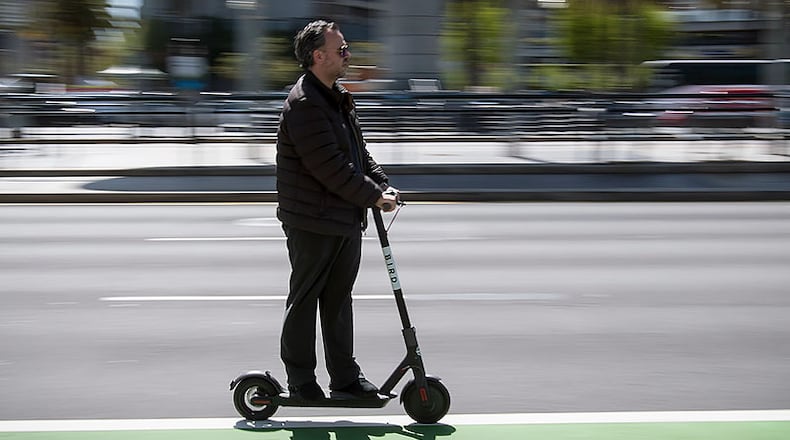Over the past year, the invasion of electric scooters on streets of major urban areas has ignited a national debate about mobility, safety and infrastructure.
That discussion — along with four fatal scooter accidents in metro Atlanta since May — has spurred Atlanta Mayor Keisha Lance Bottoms to announce a $5 million plan that will triple the city's network of protected lanes for bicycles and scooters by the end of 2021.
In all, the city will add eight miles of newly protected lanes and make other safety improvements to an additional 12 miles of roads.
"We have heard from residents of Atlanta loud and clear – people want safer streets, and they want to see real changes before another tragedy occurs," Bottoms said in a statement Wednesday.
Protected lanes employ traffic calming devices, such as bollards, planters or barrels, to provide physical barriers between motor vehicles and the lanes designated for bikes and scooters. The city’s most prominent example is the white plastic bollards at the southern edge of Piedmont Park that create a protected lane along 10th Street.
The city currently has four miles of protected lanes. The first newly protected lane will be constructed in Midtown next month, said Senior Transportation Policy Advisor Jacob Tzegaegbe.
City officials are still identifying sources of funding for Bottoms’ $5 million plan and aren’t yet certain what the barriers will look like.
“They will look different depending on the community,” Tzegaegbe said.
Shared scooters were first introduced in Santa Monica by the company Bird in late 2017. Bird scooters were also the first to arrive in Atlanta in May of 2018.
Paul Steely White, Bird’s director of safety, said that rider surveys indicate that cities with well-established bike lane network’s tend to see fewer scooter accidents. White said he is “thrilled” with the city’s plan to improve streets.
“The infrastructure solutions are the ones that time and again have proven to be the most effective,” White said. “By prioritizing safe infrastructure design and traffic enforcement, Atlanta has the most power to reduce injury and fatality rates for all road users, including e-scooter riders.”
Scooters have proven so popular that they have changed the terms transportation officials use to describe what have traditionally been referred to as bike lanes, which are increasingly being called “Light Individual Transport Lanes” because scooters also use them.
The city identified streets for safety improvements based on its “high-injury network” — a group of roads that see the greatest number of injuries. Tzegaebe said that 72 percent of traffic fatalities and 40 percent of traffic injuries occur on just six percent of the city’s roads.
The streets targeted for safety improvements are scattered throughout the city, but appear most heavily concentrated in Midtown, where scooters are most frequently used.
Atlanta has been one of the more scooter-friendly cities, as officials have embraced the new technology as a way to reduce congestion.
Bottoms' proposal for new protected lanes is one of several that the administration has put forward in recent months. This past summer, Bottoms issued executive orders prohibiting the issuance of new permits for additional scooters and forbidding them from being used after 9 p.m.
The overall plan is to implement safety improvements to 20 city corridors for people who walk, drive, take transit and ride a bike or scooter.
“A safe city starts with streets designed for everyone,” Bottoms said.
About the Author
Keep Reading
The Latest
Featured





